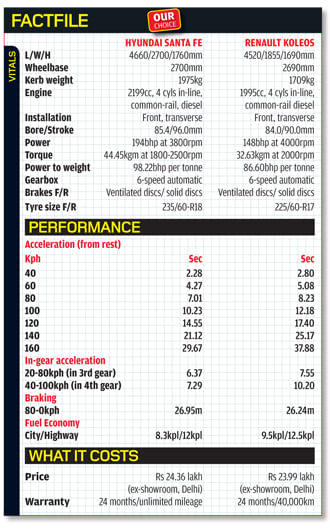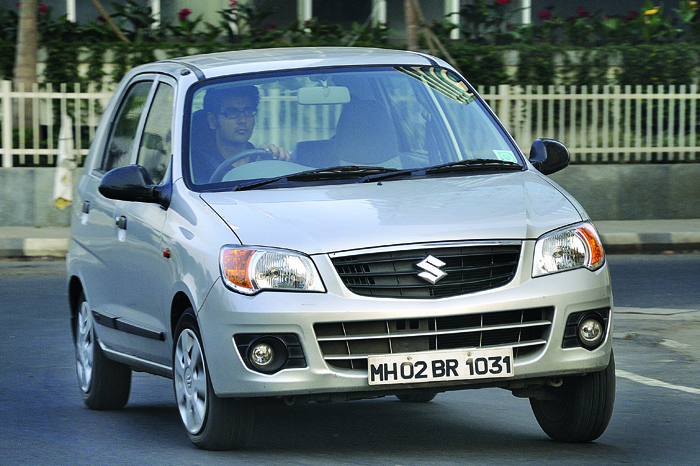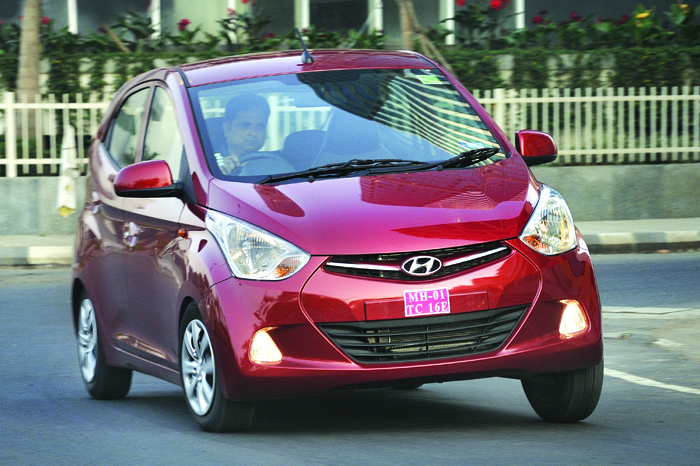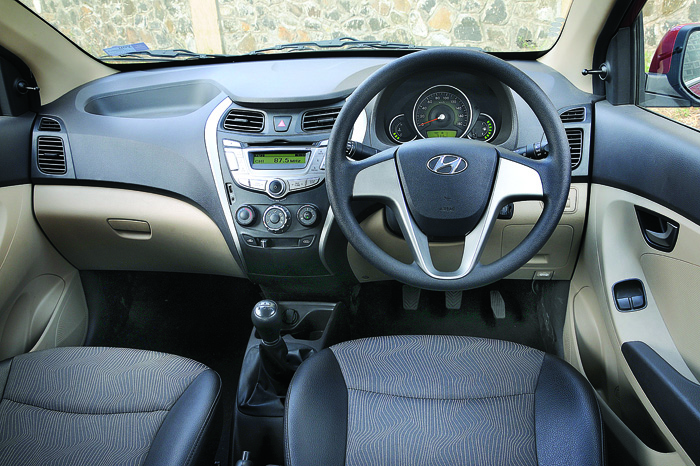Modern luxury soft-roaders can accomplish almost any task. The automotive equivalent of cricketing all-rounders, not only can this bunch bat, bowl and field, they excel at practically every discipline. They provide comfortable seating, have cavernous boots, car-like monocoque chassis and good high-speed manners, with four-wheel drive and high ground clearances to manage dirt roads. Is it any wonder then that they are so desirable?
While Honda’s CR-V once ruled the roost and was India’s largest selling import, skyrocketing petrol prices and a rapidly climbing Japanese Yen quickly put an end to its dominance. The crown was then inherited by Chevrolet’s Captiva, a car that couldn’t hold a candle to the
CR-V spec-for-spec, but had the advantage of a diesel under the hood, and that was that. Fast forward to today and the diesel soft-roader class is substantially more populated. And the talent on offer is getting more impressive. Apart from the Captiva, which continues to soldier on, there’s also Nissan’s expensive but impressive X-Trail, which has one of the most rev-happy and zingy diesels we’ve ever tested. The vehicle that beat both these cars however was Hyundai’s Santa Fe. It really appealed to us when we compared it with the Captiva and X-Trail back in December 2010 and it now comes with a much-needed automatic gearbox. But is it good enough to see off Renault’s fresh-faced Koleos, only recently launched in India? Time for a 15-round slugfest; and may the best SUV win.
Different strokes
The Koleos and the Santa Fe may be similar under the skin, but these soft-roaders come from very different schools of thought. While both are built on monocoque chassis, which don’t use dedicated ladder frames to mount the body and various engine and suspension components, it’s pretty evident that the stance of the low-slung Koleos is very different from the more stand-up feel of the Santa Fe.
The Koleos is also the more attractive looking of the two, especially in this face-lifted guise. Renault thought the Indian market important enough to launch the face-lifted model here first and it must be said, in its new clothes the Koleos simply doesn’t have a bad angle. The new, more traditional wide grille, the high-mounted headlights and the wedge-shaped chin give the Koleos a very attractive face, and the faux scuff plate, protruding fog-light nacelles and bulging wheel arches make it look sporty too. Also attractive is the sweeping roofline, the angular windscreens and the wrap-around taillights.
Unlike the Koleos, the Santa Fe makes use of a lot of vertical space. Not only can you seat five comfortably on the first two rows, but there is a pair of kiddy seats at the rear as well, so the cabin is less low-slung in comparison to the Renault. The Santa Fe also comes from Hyundai’s pre-Fluidic days, and the designed-in-2007 narrow grille, spaced out headlights and ‘soft’ form just don’t look as modern.
This pair is less diverse under the skin. Both have transversely mounted engines, both have independent suspensions all round and both primarily drive the front wheels. Both have on-demand four-wheel-drive systems with four wheel locks for tough or slippery conditions.
The Renault, however, gets Alliance partner Nissan’s 4x4 system from the X-Trail that also allows you to lock it in two-wheel drive for better efficiency as well. The similarities continue. Both the Koleos and Santa Fe use six-speed automatics, both are built in Korea (the Koleos is actually built in Busan and sold as the Renault Samsung QM5 there) and despite the confusing handle on the Santa Fe, both cars have hatches at the rear. The Santa Fe is substantially heavier and weighs 266kg more than the Renault. To help deal with this additional bulk and give it a more planted stance, the Hyundai has both larger wheels and wider tyres.
Behind the wheel
There’s a fair amount of French quirkiness on display when you get behind the wheel of the Koleos. You insert the key card into the central console and thumb the starter button situated above it before you can pull the automatic lever back and get moving, and that’s a nice touch. The refinement of the Nissan’s M9R engine is immediately apparent, as it settles into a well mannered idle. Spin this 148bhp motor faster and it smoothens out even more. Renault’s state of tune, however, is quite different from Nissan’s and the Koleos lacks both the immediate responses and strong top end of the X-Trail. Due in some part to the more lackadaisical responses from the gearbox, the Koleos takes a bit to get going. So while it cruises really nicely and pulls well towards the top of the powerband, you’re often left wanting more performance, especially when you put your foot down to overtake in traffic. As a result, it is better to drive the Koleos in manual or tip-tronic mode if you are in a hurry. The only time the Koleos feels reasonably quick is when you put your foot down and allow the gearbox to shift at the 4500rpm redline. It does takes a long 12.1 seconds to reach 100kph however, and though it doesn’t feel slow in the real world, the acceleration times really are unimpressive. You take half a minute, for example, to reach 150kph, and that feels slow.
The Santa Fe, with almost 50bhp and 12kgm more, is much quicker, and that’s despite being substantially heavier. The larger-capacity 2.2-litre motor delivers a muscular slug of torque as soon as you put your foot down and flat-out performance is very strong. 100kph is dispatched in a quick 10.2 seconds, and the Hyundai continues to tug hard even after that. 150kph is reached a full six seconds before the Renault and, as you can imagine, this makes the Santa Fe feel significantly faster in the real world. The variable-geometry turbo-equipped motor works best in the midrange, where the smooth delivery of instant power is very gratifying and, expectedly, overtaking even with all the bulk this SUV has is a breeze. Also pretty impressive is the six-speed gearbox that, all things considered, is both responsive and quick to downshift. And this means the motor manages to mask the bulk of this SUV pretty well, even in stop-start traffic. Performance on the highway is very strong too, and holding on to speeds as high as 120 or 140kph feels pretty effortless, making this a good vehicle to travel long distances in.
The more agile handler of the two however is the lower-slung Renault. Driving for all practical purposes like a slightly raised large saloon, the Koleos displays good poise and balance at speed. There is a bit of body roll as you corner the SUV harder, but it doesn’t feel sloppy or throw its weight around, so you get a fair amount of confidence from behind the wheel. The light electric steering isn’t as feelsome as the Honda CR-V’s and neither is the overall handling as good,
but this is one of the nicer handling SUVs for sure. Renault has also managed to give the Koleos a supple ride; something the Honda lacks. Most bumps are seamlessly absorbed at low speed and the ride is comfortable and pliant as you go faster as well. Horizontal ridges and sharp-edged bumps do catch the suspension out, and you do feel and hear the occasional whack and thud, but overall the Renault’s ride and handling is the best in class.
The Santa Fe’s suspension is slightly stiffer in comparison. You feel more of the road, even at low speeds and though the longer-travel suspension takes the larger bumps better than the Renault, overall ride quality isn’t as supple. You are always aware of a layer of underlying stiffness in the suspension and there is almost a constant pitter-patter over poorly paved roads. Still, the Santa Fe does insulate you and the cabin from the worst stuff and as a result the ride never comes close to being uncomfortable. With its tall stance, long-travel suspension and considerable bulk, the Santa Fe isn’t as tidy a handler as the Renault either. You can feel the additional weight of the SUV in corners, especially due to the soft rear, and roll often comes into play on tighter corners. The hydraulic steering has more feel than that of the Koleos, straight-line stability is very impressive even at speeds as high as 180kph and
the levels of grip generated are pretty high too, so overall the Hyundai does a good job. It’s just that the Renault is better.
Both of these soft-roaders come with four-wheel drive, but the amount of clearance and a general lack of cladding on the sides means you are better off sticking to dirt tracks and gentle inclines. Whatever you do, don’t buy either of these for serious off-roading; a traditional SUV like a Toyota Fortuner is much better for that.
Internal affairs
With a car’s interiors forming a vital part of the desirability equation, it’s no wonder that manufacturers are spending proportionately more and more on the insides. The Koleos, for example, comes with a high quality Bose sound system, a beautifully detailed and built central console and plenty of unique features like anti-whiplash headrests and tray tables for rear seat passengers. The large front seats have plenty of thigh support and come with power adjustment. The cabin has a wide and airy feel to it, even at the rear, and passengers in the back are sat at a height, so visibility is good. Legroom at the rear is sufficient, the backrest can be reclined and thigh support is decent, meaning this is a good car to be a passenger in. Still, the cabin does feel a bit basic. Large amounts of dull plastic adorn the dash, the instrument panel looks too plain for a car of this price, and you can only seat five in the Koleos, which puts it at a disadvantage. The split rear tailgate and the flat folding seats however do make this a very luggage-friendly SUV.
Climb up into the Santa Fe after the Renault and the first thing that strikes you is how much more old fashioned the interiors of the Hyundai feel. Yes, some bits are solidly built and the ‘floating’ central console looks exciting, but the basic design looks very long in the tooth. And it doesn’t help that some of the plastics are not up to the standards expected of a SUV of this price. The vents feel flimsy, the quality of the window switches is poor and the array of buttons on the right of the steering wheel just doesn’t do this car justice. What this big Hyundai has is plenty of space. The cabin is wider than that of the Koleos, the Hyundai’s seats are large and supportive and there’s substantially more space and support for rear seat passengers. The Santa Fe gets a third row of seats as well, which instantly makes it more appealing to large Indian families.
David vs Goliath
The Renault is clearly the more compact SUV here. Nimble and easy to drive in the city, a breeze to park, and blessed with car-like handling at high speeds, the Koleos delivers the best-of-both-worlds performance you expect from a soft-roader. It’s also easily the more attractive looking of the two, so it has a lot going for it. The interiors, however, lack that all-important upmarket feel and the motor lacks performance and punch.
The Santa Fe in comparison is a better car overall. More in line with what Indian customers are looking for, it is larger, more spacious and as well equipped. It rides and handles reasonably well, the automatic gearbox does a decent job, you get an extra couple of seats and Hyundai’s muscular and torquey diesel is the icing on the cake. In fact, with the Santa Fe, it’s fair to say thatthe whole is greater than the sum of its parts, and this allows the Hyundai to nose ahead, especially since both cars are priced so closely.



















.jpg?w=728&q=75)
_6.jpg?w=728&q=75)
.jpg?w=728&q=75)
.jpg?w=728&q=75)
_0.jpg?w=728&q=75)
.jpg?w=728&q=75)
.jpg?w=728&q=75)
.jpg?w=728&q=75)
.jpg?w=728&q=75)
.jpg?w=728&q=75)
.jpg?w=728&q=75)
.jpg?w=728&q=75)
.jpg?w=728&q=75)
.jpg?w=728&q=75)
.jpg?w=728&q=75)
_0.jpg?w=728&q=75)
.jpg?w=728&q=75)
.jpg?w=728&q=75)
.jpg?w=728&q=75)














